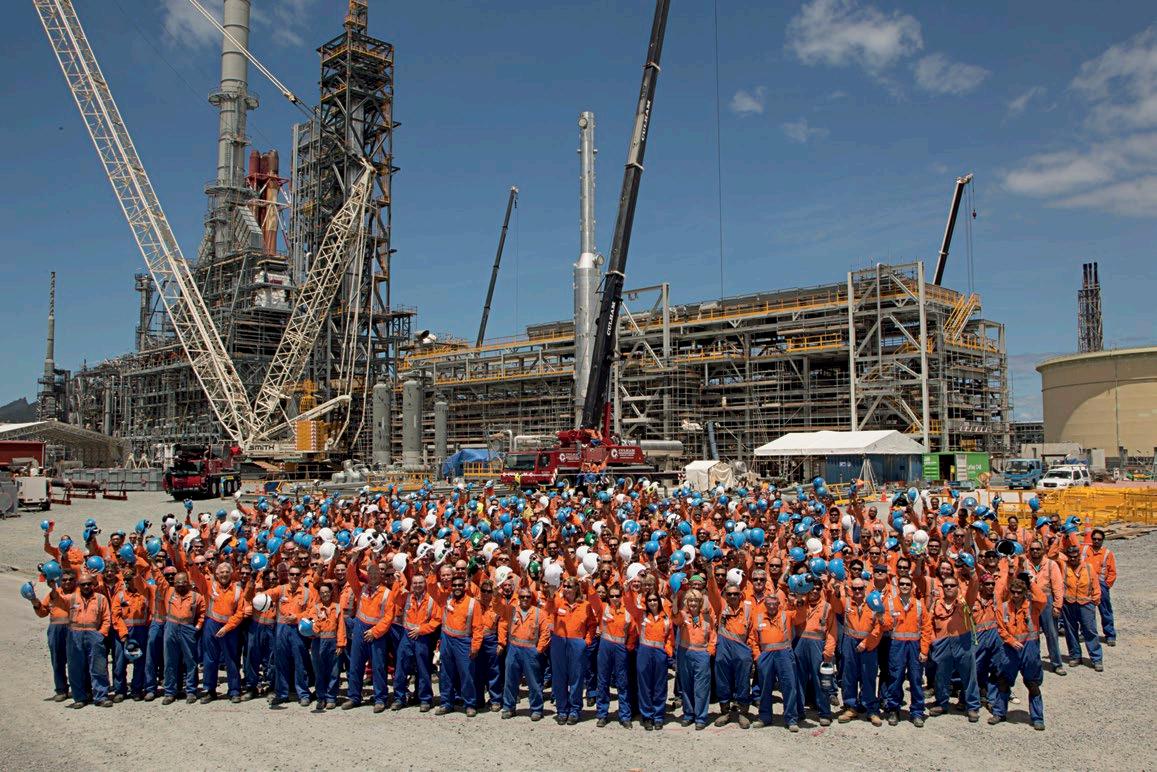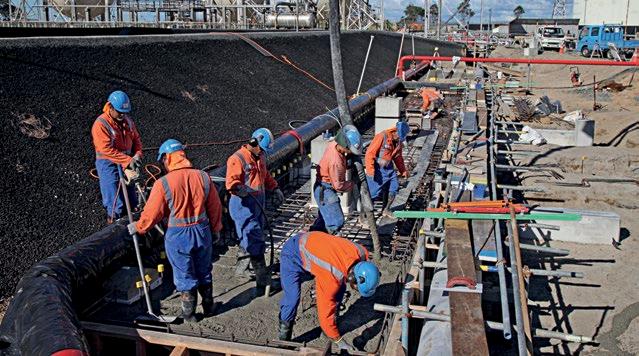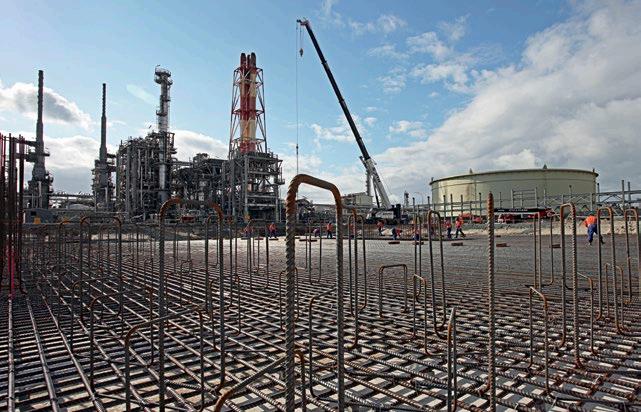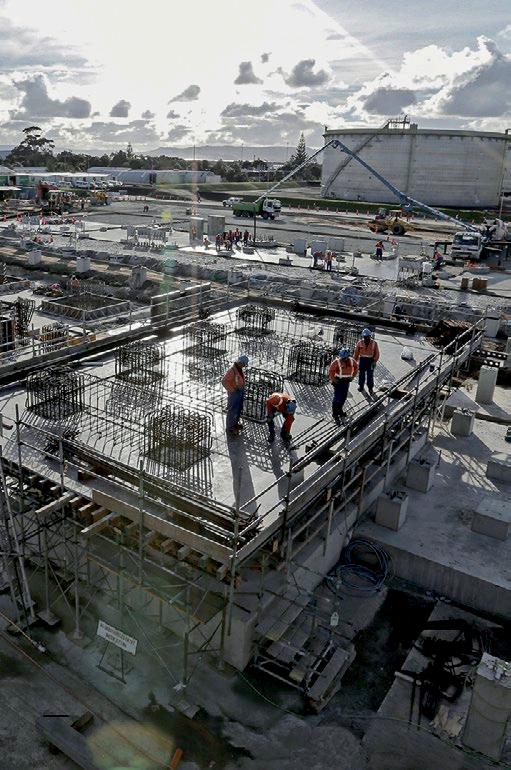
3 minute read
United Civil Construction
No need to burn the midnight oil
when United Civil is involved
Advertisement
In 2012, New Zealand’s only oil refinery – Refining NZ – started a $365 million project to replace an aging semi-regeneration platformer. The project has come to be known as ‘The New Venture — Te Mahi Hou’.
CATEGORY 4
PROJECT: The New Venture, Te Mahi Hou Project, Whangarei CONTRACTOR: United Civil Construction Following a rigorous selection process, United Civil Construction was formally appointed in early 2013 as the civil works contractor on Te Mahi Hou. Since then, everything has been on track, on time and to budget.
In the very broadest of terms Te Mahi Hou is a new processing plant being constructed in an area previously occupied by large product storage tanks.
In engineering terms it’s the placement of 2750 cubic metres of concrete into one large mat foundation. It will see equipment manufactured in over a dozen countries around the globe and assembled and incorporated into works performed on site by New Zealand contractors.
Once complete, the new works will be designated ‘E Block’ and will rise to a height of around 90 metres above grade, changing the landscape of the skyline at the entrance of the Whangarei Harbour.
The project will enable Refining NZ to process not only more, but a wide range of crude oils more efficiently.
Initially expected to be operational in late December 2015, workers have made excellent progress in recent months. It is now expected to complete early to mid-November.
Refining NZ CEO Sjoerd Post says the credit for the expected early delivery rests with the project team continually



delivering to world-class standards.
“Te Mahi Hou is a significant undertaking for Refining NZ. Its success to date is down to a highly professional team who’ve leveraged their major project know-how from recent expansions, to coordinate engineering design across three separate locations, secure critical components from across the globe and package them at Marsden Point through excellent project management and construction,” he says.
United Civil managing director Andrew Campbell explains many of the construction innovations have come from the work crews themselves.
“Employees were encouraged to come up with ways that would make their work safer and more efficient and these ideas would then be filtered, further investigated and often implemented,” he says.
“For example, a predetermined construction methodology from America, which would have required extensive amounts of sheet-piling and a more linear construction schedule, was abandoned in favour of ‘bath-tubbing’ the site and using smaller machines avoiding the need for piling.”
This has allowed works from other multiple trades to start much earlier in the project timeline.
“Additionally, hanging the concrete specification for a 16 metre-high heavily reinforced reactor tower to self compacting concrete (SCC), provides for a very high quality outcome.”
Other innovations saw the crew building reinforcing cages at grade and then lifting them into preassembled forms.
The minimised time spent working at height, reduced overall construction time and significantly reduced steel fixing and crane hire costs.
That the civil works have been completed in full compliance with the schedule is an additional feather in United’s cap.
In fact, the work has earned the praise of an international project peer review panel – all without any lost time injuries in the 270,000 man-hours United has worked. In total, the overall construction schedule saw 13,500 activities, adding up to a total of 1.3 million construction man hours.
Not a bad result when your site is a hazardous, busy, highly flammable and operating oil refinery (where excavated soils have often been saturated and contaminated with hazardous hydrocarbons).
Refining NZ project director Jack Ariel says the quality of work results from a meticulous planning process and a seamless execution that has been second to none. l










